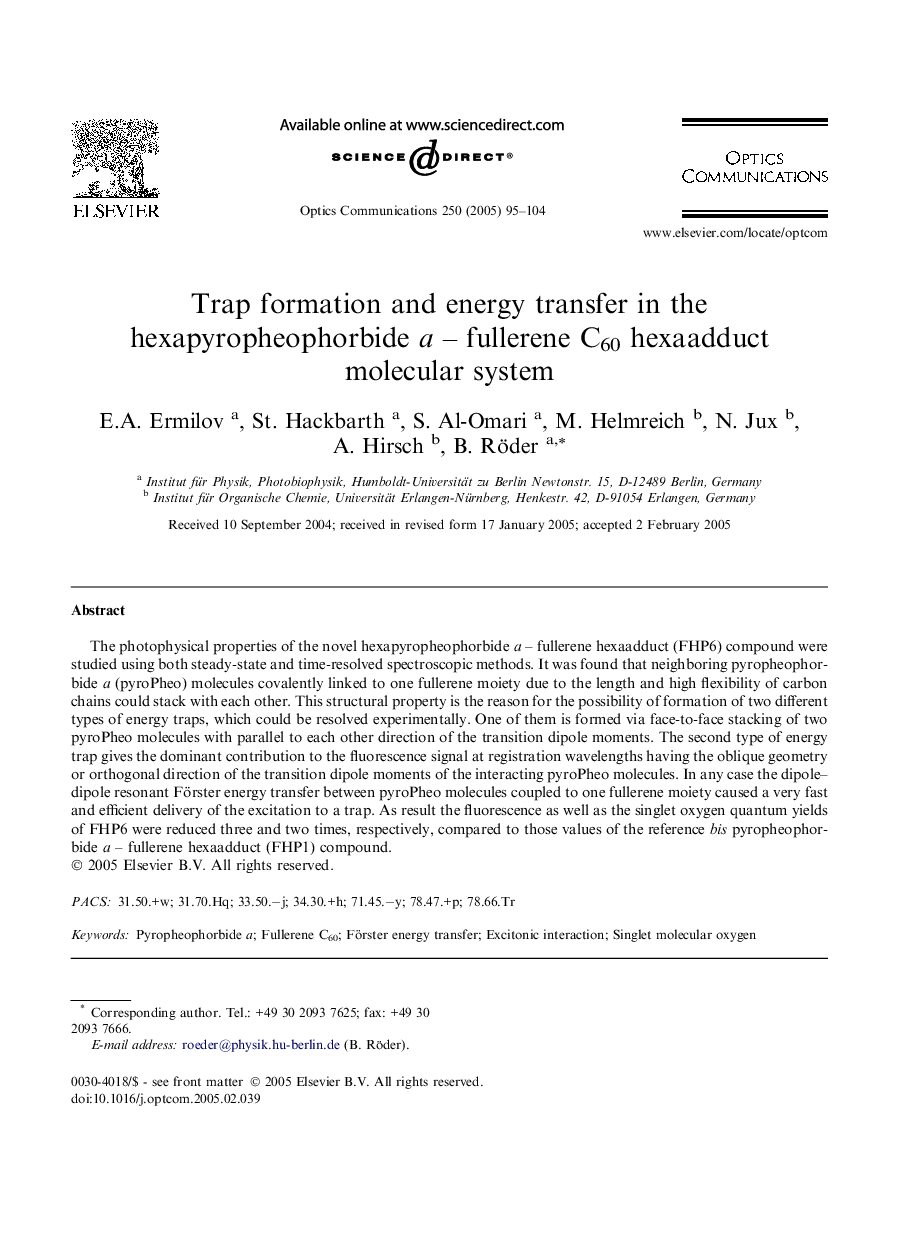| Article ID | Journal | Published Year | Pages | File Type |
|---|---|---|---|---|
| 9785858 | Optics Communications | 2005 | 10 Pages |
Abstract
The photophysical properties of the novel hexapyropheophorbide a - fullerene hexaadduct (FHP6) compound were studied using both steady-state and time-resolved spectroscopic methods. It was found that neighboring pyropheophorbide a (pyroPheo) molecules covalently linked to one fullerene moiety due to the length and high flexibility of carbon chains could stack with each other. This structural property is the reason for the possibility of formation of two different types of energy traps, which could be resolved experimentally. One of them is formed via face-to-face stacking of two pyroPheo molecules with parallel to each other direction of the transition dipole moments. The second type of energy trap gives the dominant contribution to the fluorescence signal at registration wavelengths having the oblique geometry or orthogonal direction of the transition dipole moments of the interacting pyroPheo molecules. In any case the dipole-dipole resonant Förster energy transfer between pyroPheo molecules coupled to one fullerene moiety caused a very fast and efficient delivery of the excitation to a trap. As result the fluorescence as well as the singlet oxygen quantum yields of FHP6 were reduced three and two times, respectively, compared to those values of the reference bis pyropheophorbide a - fullerene hexaadduct (FHP1) compound.
Keywords
Related Topics
Physical Sciences and Engineering
Materials Science
Electronic, Optical and Magnetic Materials
Authors
E.A. Ermilov, St. Hackbarth, S. Al-Omari, M. Helmreich, N. Jux, A. Hirsch, B. Röder,
